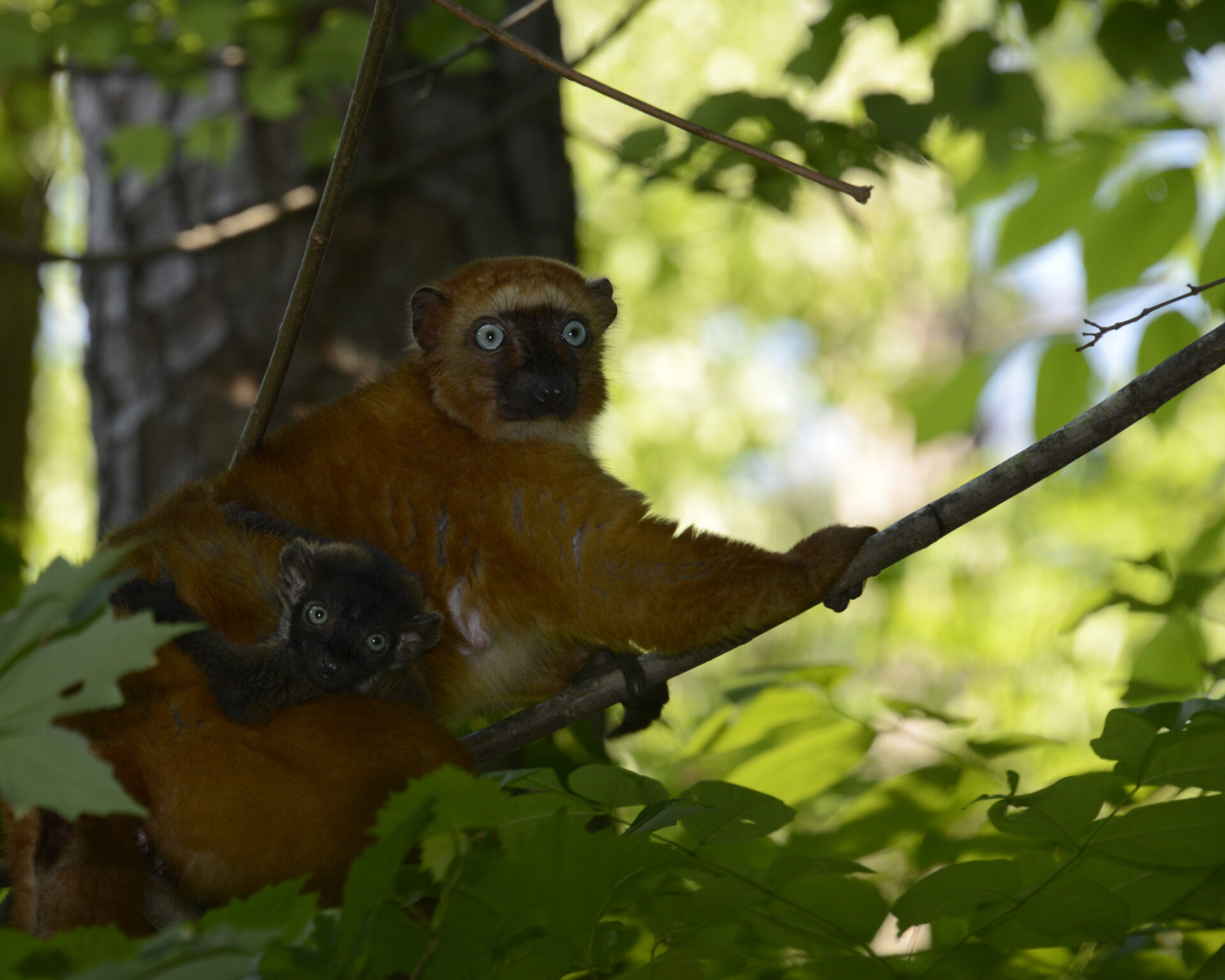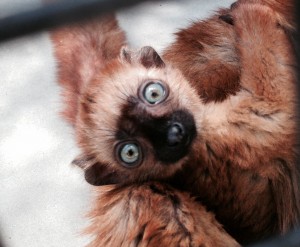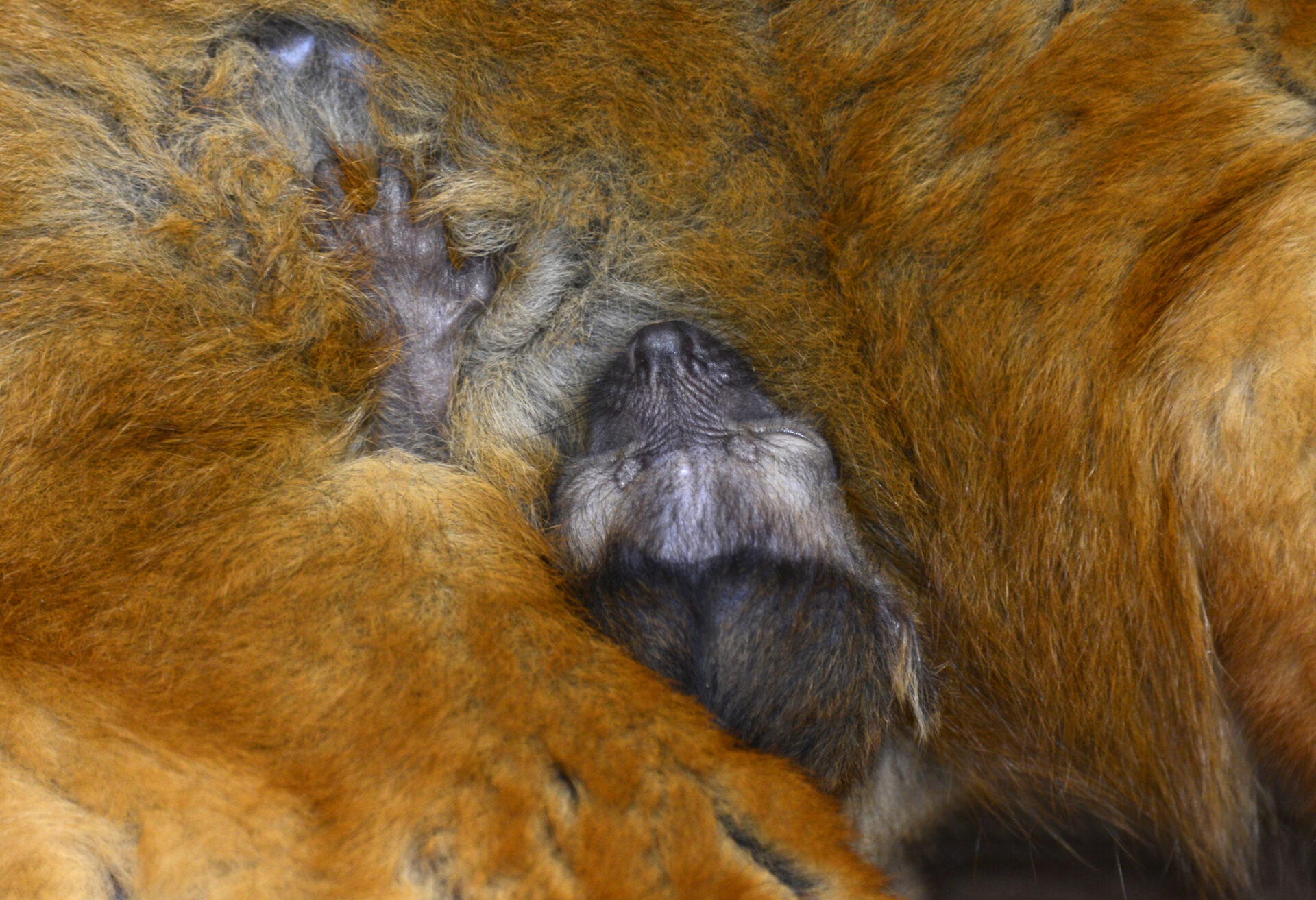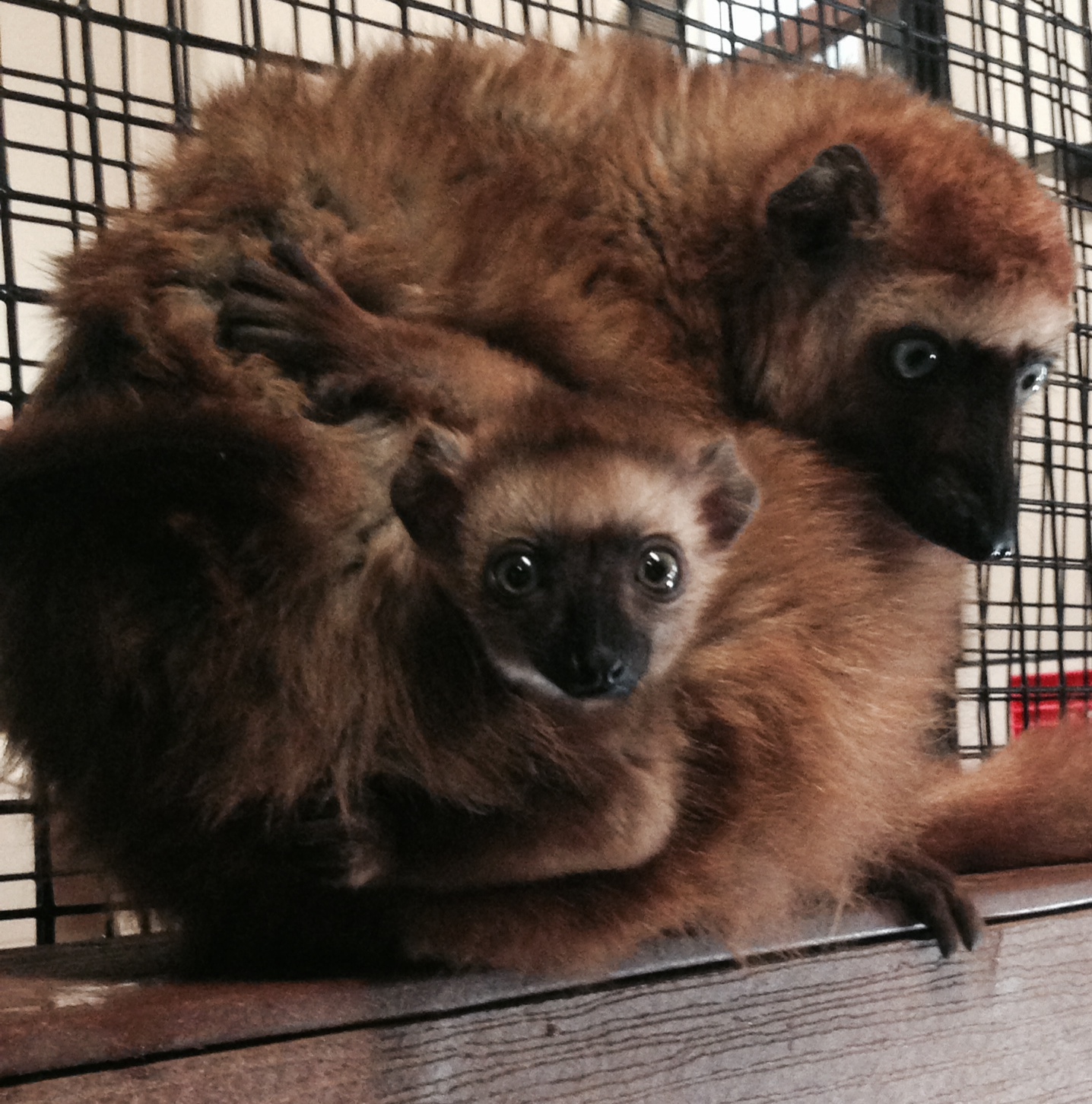June 10, 2014 — Meet the newest baby blue-eyed black lemurs at the Duke Lemur Center.
Bacon was born on March 25, 2014 to mother West and father Quinn in a group that also includes big brother Hiddleston. Bacon weighed 80 grams at birth. He has continued to grow big and strong since. Keepers at the Duke Lemur Center name every blue-eyed black lemur baby after a famous blue-eyed celebrity, in this case, Kevin Bacon. Bacon and family now live outside in a forested free-range enclosure with about 3 acres of wooded area. At only 6 weeks old, Bacon climbed off of his mother and started climbing trees and branches. He didn’t get very high the first time before jumping back onto his mom’s back!
Wiig (named for actress Kristen Wiig) was born shortly after Bacon on April 4, 2014. She was born to mother Margret and father Tarantino and now lives with her sister Poots as well. Lemur keepers noticed Margret was very nervous and protective with her new infant, so they chose to wait to weigh her baby. This “hands-off” policy ensures that mothers feel as comfortable and safe in their environment as possible during the critical first few weeks for the infant. The Duke Lemur Center is especially excited to have a female blue-eyed black lemur born. The current blue-eyed black lemur population is skewed towards many males and few females. Female infants are invaluable for this species to continue to thrive in captivity.
So why is orange the new black at the Duke Lemur Center? Blue-eyed black lemurs are sexually dimorphic, meaning males and females possess different physical characteristics. Adult male black lemurs have black fur color, while adult females have orange-brown fur color. Male infants, like Bacon, are actually born with orange-colored fur identical to their mother. It can take 4-8 weeks for males to turn black – orange becomes black. Female infants are born the color of their mother and remain orange.
The Duke Lemur Center is the world’s largest and most diverse collection of lemurs outside of Madagascar. Margret and West are the only breeding blue-eyed black lemurs in North America, making Bacon and West very valuable to the preservation of this species in captivity and in the wild. In Madagascar, blue-eyed black lemurs are listed as a critically endangered species and one of the top 25 most endangered primates on the planet. The most recent data on wild populations suggested that populations could be as low as about 2700 individuals. The Lemur Center works diligently to preserve healthy populations with good genetic diversity in captivity, to serve as an important safety net for blue-eyed black lemurs in the wild.
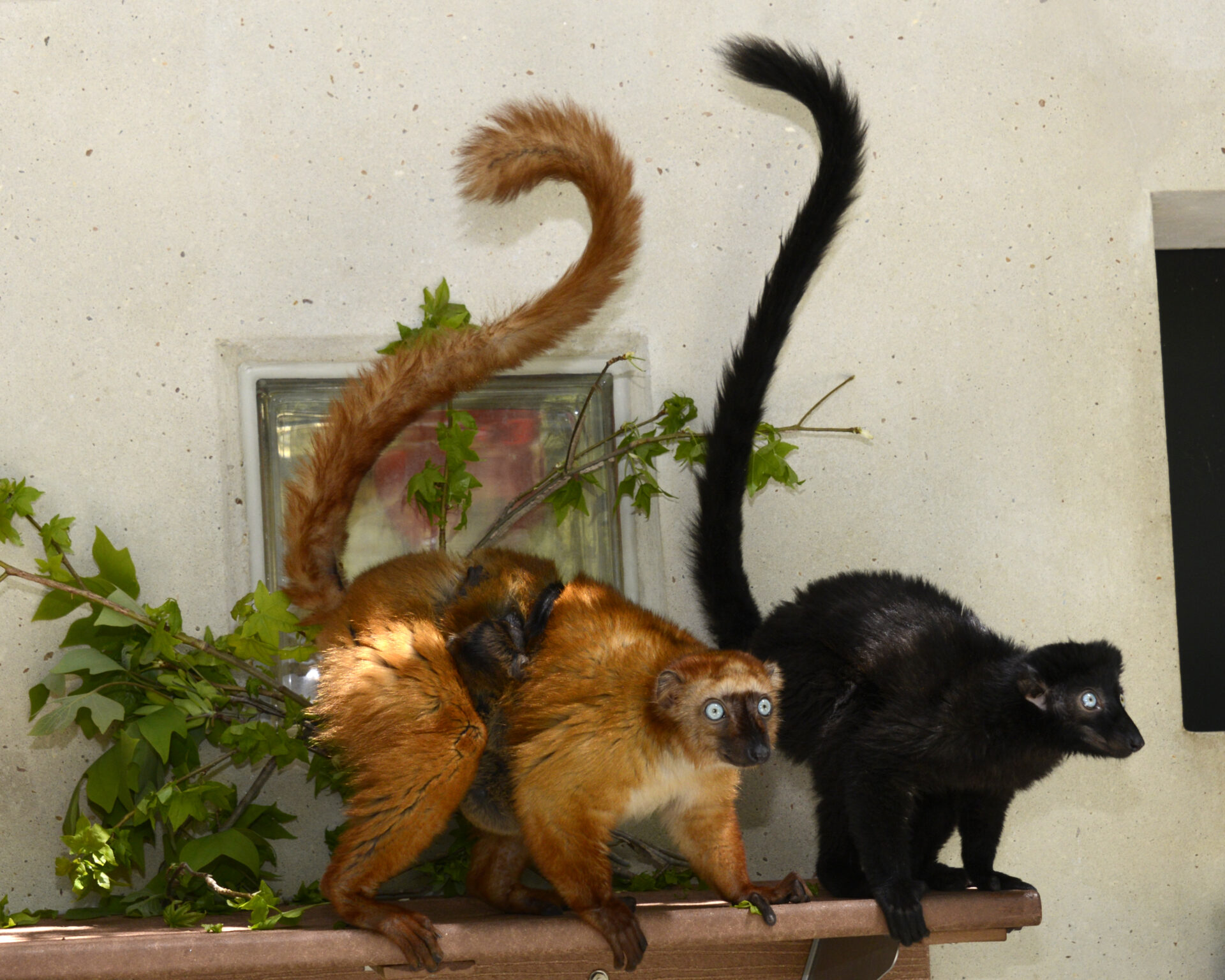
Bacon with mom West and brother Hiddleston.
Visitors to the Lemur Center participating in the Walking with Lemurs tour will have the opportunity to see Bacon, should they visit natural habitat enclosure #3, where he lives. If you can’t get to the Lemur Center any time soon, look us up on Facebook, Twitter, or Instagram for the latest lemur news, or sign up for our e-newsletter.
 Chris Smith has been at the Lemur Center since 2009 as student, volunteer, keeper and now serves as education specialist. He completed a Masters in Environmental Management from Duke University in 2011 and has been interpreting wild animals and wild places for 7 years. When he’s not working with lemurs, you can probably find Chris at the boxing gym.
Chris Smith has been at the Lemur Center since 2009 as student, volunteer, keeper and now serves as education specialist. He completed a Masters in Environmental Management from Duke University in 2011 and has been interpreting wild animals and wild places for 7 years. When he’s not working with lemurs, you can probably find Chris at the boxing gym.

